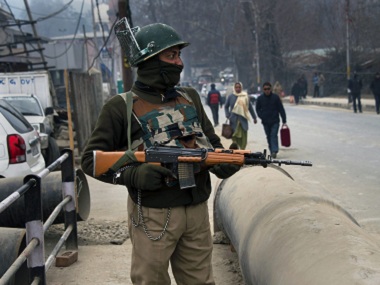The Republic Day commemorates India’s decisive shift from a colonial arrangement of governance to a post-colonial one. The date on which the Constitution came into effect is also the one that hallows the memory of a struggle that produced independent people. It holds out the promise of a society that is just and creative in the task of producing a prosperous future. How then should we view the Republic Day being represented largely as a show of military might? Is our national culture and the aims of the Constitution best represented through symbols of militarism? In the years following independence, India continued with many colonial practices, including reproducing the imagination of the state as militarily powerful. Imperialism rests fundamentally on the capacity to enforce its writ through violence. The post-colonial elite, having been talked down to by the colonial masters as incapable of self-rule, seek to undo that representation. [caption id=“attachment_5573731” align=“alignleft” width=“380”] File image of security personnel posted in Kashmir. PTI[/caption] Militarism, including its symbolic aspects, is a significant part of the post-colonial psychology that seeks to rid itself of the ‘feminisation’ it perceives to have suffered at the hands of the colonial masters. In India, the Republic Day Parade is also enmeshed in the history of India-Pakistan relations and the deep humiliation suffered at the hands of the Chinese army in 1962. The colonial shame was compounded through post-colonial forms of threat and disgrace. Symbolic militarism, including that on display at the Republic Day Parade, is a salve to past injuries and a proclamation of contemporary prowess. Unlike other countries where wars play a significant role in the national imagination, Indian commemorations only nominally celebrate the ‘common’ people. In Australia, experiences of war are not remembered through a display of military might. ANZAC Day ceremonies — that remember Australian and New Zealand casualties during the World War I — focus on the ordinary soldier. In recent years, militarism has got deeply embedded as an existential fact of Indian life and we have become attracted to displays of military braggadocio as an aspect of national character. This is a significant feature of the appeal of the armament aesthetics of the parade. Advertisements for products as disparate as butter, tiles, cars and men’s deodorant have — through aestheticising violence and caricaturing valour — packaged militarism as an everyday part of life. War is no longer an aberration that involves blood and mutilated bodies, but a normalised viewing experience. Keen to shake off the ‘third-world’ tag, a ‘new’ India seeks to announce its arrival on the global stage through symbols of military might. Is military might — one that has little to do with how wars are experienced by those forced to take part in them — the most appropriate symbolism for a national day? How is either the public or its democratic aspirations represented in one of the most significant days of the national calendar? Does it commemorate the sacrifices of defence personnel and their families or is it merely a cynical political exercise? The current form of the parade reinforces the notion that the nation-state is perpetually under threat both from within (“terrorists”) and beyond its borders (the “foreign hand”). It also reinforces the idea that to question the actions of governments as they delineate internal and external threats is to question the idea of the nation-state itself. The Republic Day spectacle produces the opposite effect of what it is intended to: rather than cheering entrepreneurial energies, native ingenuity and democratic freedoms, it celebrates a top-down version of national identity. If in military terms it revels in sanctifying the missile over the soldier, in civilian terms it foregrounds the elite over the ordinary citizen. Rituals are contexts that direct us to certain ways of thinking about the social worlds we occupy. So it is with the Republic Day Parade. Unfortunately, it directs us to be passive citizens to be dictated to by the state, one that does not approve of a citizenry that might ask, “Why should we celebrate military might?” Concern and admiration for the forces would be better exhibited by improving the conditions in which the soldier works. The aspirations of the Constitution cannot be captured by anachronistic ideas derived from hyper-patriotism and ill-served by the current form of the Republic Day Parade. The writer is a sociologist at the Institute of Economic Growth, Delhi
Symbolic militarism, including that on display at the Republic Day Parade, is a salve to past injuries and a proclamation of contemporary prowess
Advertisement
End of Article


)

)
)
)
)
)
)
)
)



